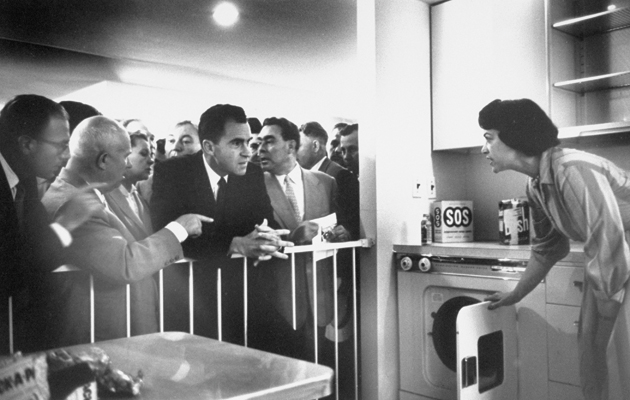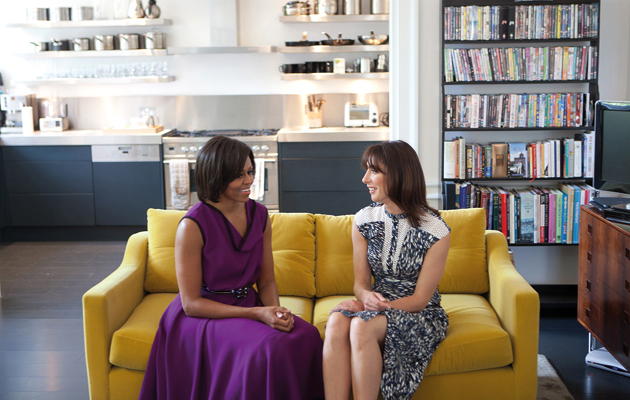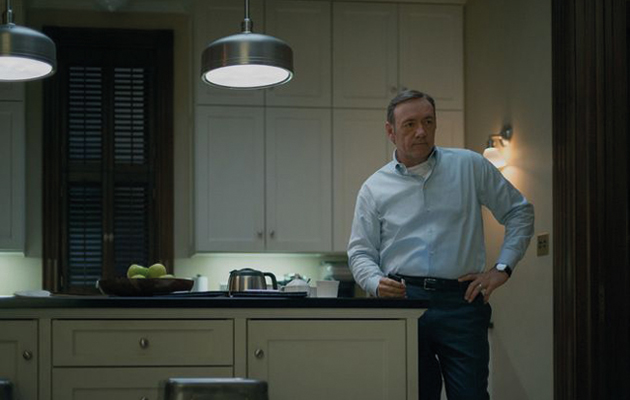|
|
||
|
The lead up to today’s British general election has revealed that no other room expresses more fully a family’s taste and values – which is why politicians want to be seen mug in hand and why commentators search for meaning in Ed Miliband’s lino, says Edwin Heathcote In Moscow’s Sokolniki Park in 1959, Nikita Khrushchev and Richard Nixon had an argument in a mocked-up American kitchen, part of an exhibit set up to display US consumer goods to curious Muscovites. Nixon claimed this glamorous kitchen, full of labour-saving devices and streamlined white goods, was attainable by every American household. Khrushchev declared that, within a few years, every Russian household would have a kitchen at least as good. Broadcast on TV at the height of Cold War tensions, the exchange became known as the “Kitchen Debate”. Recently, Ed Miliband, leader of the Labour party, was interviewed with his wife, Justine, in the small kitchen of his north London home. Sarah Vine, wife of Conservative politician Michael Gove, wrote a column in the Daily Mail – a right-wing tabloid – pretending to pity the Milibands for their soulless kitchen, suggesting that its barrenness indicated some kind of existential bleakness in Miliband’s soul. Where’s the warmth? The family hearth? Vine didn’t mention that the kitchen at her own home was funded by taxpayers until the couple were forced to pay the money back once an expenses scandal erupted, dominating British politics throughout 2009. When David Cameron moved into Downing Street, he caused a kerfuffle by building a new £30,000 kitchen, which, shortly afterwards, became the homely background for a photo op between his wife Samantha and Michelle Obama. Politicians like to be seen in kitchens because it humanises them. The mug of coffee, the kids’ fridge magnets, a bit of veg chopping – it presents the cosy domesticity of someone not afraid to do their stuff in the home, to spend time with their family. The real damage to Miliband came not from the sparseness of the kitchen but from the revelation that this was their “second kitchen” – a room for “tea and quick snacks”, in the words of a friend. Two kitchens? Outrageous. It showed how out of touch he was. Would there have been the same furore if the Milibands had been exposed as having, say, three bathrooms? Or even two reception rooms? Yet many people do – not only the very wealthy. The kitchen, it seems, has a particular place in political iconography. Margaret Thatcher was often photographed in the kitchen at her constituency home, in her Downing Street flat, even at the Ideal Home show. It burnished her image as a prudent housewife. These kitchens were invariably simple and small. No Agas. At the recent phone-hacking trials, we heard about “kitchen suppers” at the Camerons’ Cotswolds home with News International chums and Jeremy Clarkson. The presumption was that these were less formal than what we might call “dining room dinners”. No candelabras. Fewer staff on hand to do the cooking. |
Words Edwin Heathcote
Above: Nikita Khrushchev and Richard Nixon debate washing machines at the 1959 American National Exhibition in Moscow
Images: Howard Sochurek; Lawrence Jackson/AFP/Getty Images |
|
|
||
|
Michelle Obama and Samantha Cameron in the £30,000 kitchen at 10 Downing Street in May 2011 |
||
|
The Camerons’ Downing Street abode is kitted out in urban everyman chic: a blend of Ikea and stainless steel – tough and functional but humanised by touches of Italian design flair. Today’s media revels in identifying brands, in dissecting the kitchen by cost and label, so it needs to be chosen with just the right mix – no item is bought without consideration of its PR appeal. This is kitchen as political shop window. A little different is Frank Underwood’s White House kitchen in US political drama House of Cards. The appliances here, too, are stainless steel but there’s less light. It is a dark, cold place in shades of grey. The lighting is low, the stools in industrial galvanised steel, but the hint of panels on the kitchen cabinets suggests the historic DC setting. No cooking goes on here. Frank Underwood makes himself a late-night peanut butter and jelly sandwich or partakes of frosty breakfasts over the morning papers. There are no children, no fridge magnets – the design and palette suggest the cold emptiness at the heart of the couple’s ruthless ascent to power. What has changed over the last generation is that the kitchen has become the principal representational space of the house. It is the room that most fully expresses the taste, aspirations, social milieu and status of a family. It can be discreetly filled with expensive things – catering-standard kitchen equipment, US-style mega-fridges, Dualit toasters, Italian coffee machines, Le Creuset pots, David Mellor flatware, a Castiglioni lamp. These are code for metropolitan wealth and taste. There is no room here for inherited furniture – remember the late Alan Clark’s description of Tory colleague Michael Heseltine as the kind of person “who bought his own furniture”? Everything here is new. Nothing is quirky, nothing accidental, nothing conspicuously unfashionable. This is a space that has been styled to death but yet also, paradoxically, has been styled to look spontaneous. This phenomenon is not limited to politicians. The luxury apartments that have become the sole product of London and New York developers, for example, come, like the Milibands’ home, with two kitchens. One for show – a huge space that’s apparently the social hub of a home, but nobody ever really lives in, and a servants’ kitchen, which is where the food preparation is actually carried out, by staff. The irony is that, as the kitchen increasingly becomes the symbol of domestic rootedness, fewer people ever use it for cooking or eating. It has become a memory of a space, a subconscious leftover. So when politicians are shown in their kitchens, instead of reinforcing authenticity, it only adds to the sham. The Milibands’ denuded, minimal kitchen for snacks and hot drinks is an honestly functional space. There has been no attention paid to the social meaning of its fittings, which are white and basic – crap, non-retro, non-designer plastic with a touch of stainless steel or, to one side, an ugly, leftover stool. Vine comments that it has “Communist-style egalitarian lino”. Egalitarian lino! This, my friends, is what we have in store if we vote Labour, according to the Daily Mail: cheap kitchens and communist floor coverings. This article also appeared in Icon 144: Poland |
||
|
“A dark, cold place” – Frank Underwood’s kitchen in House of Cards |
||






















